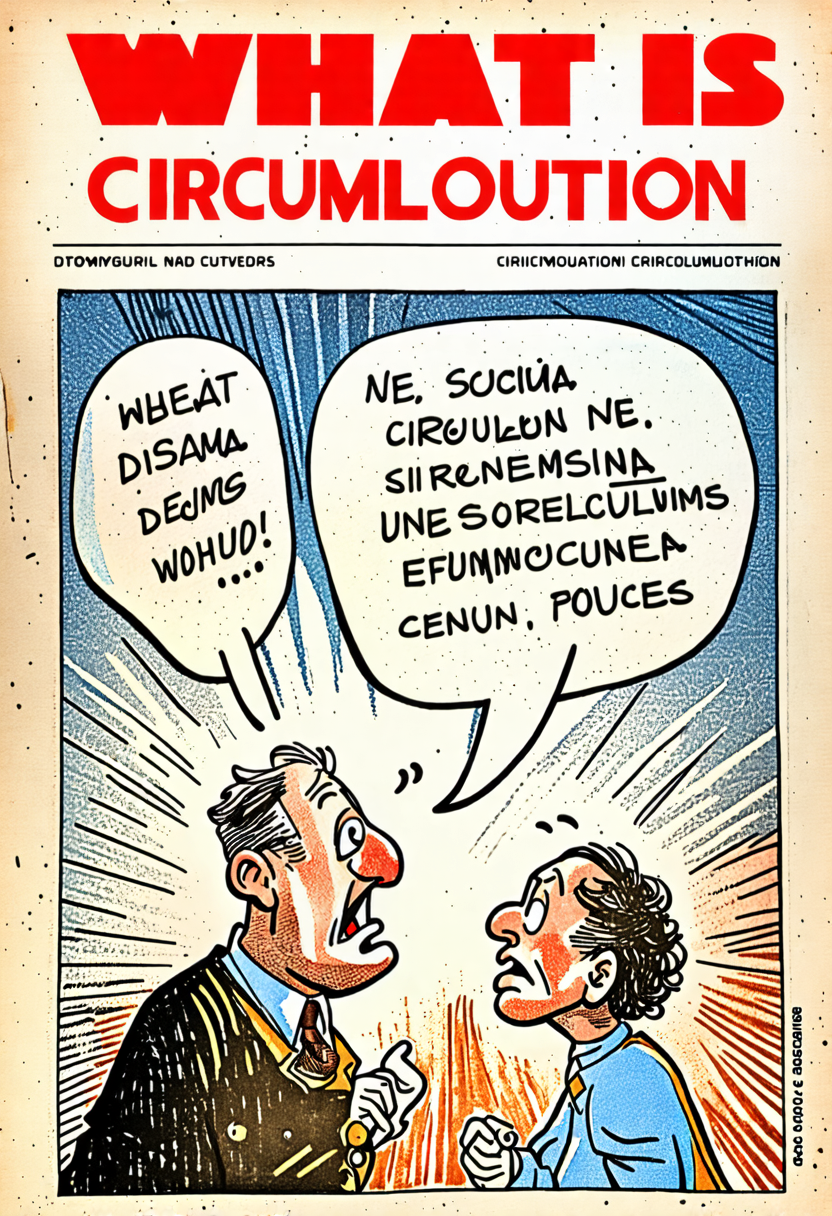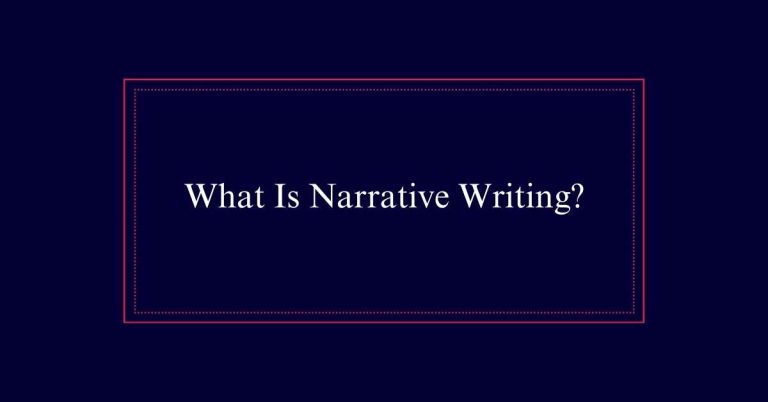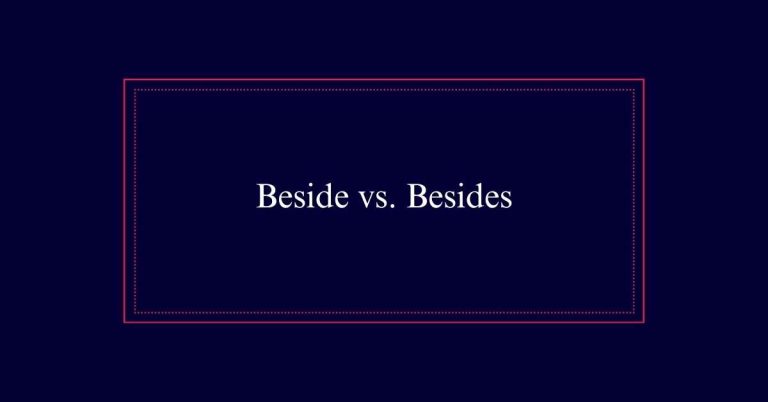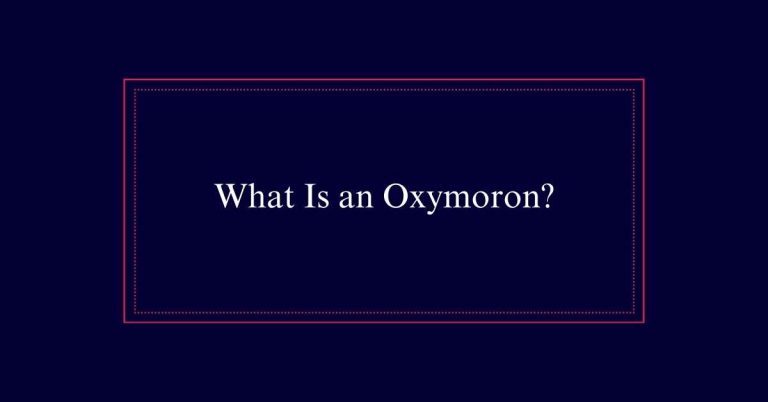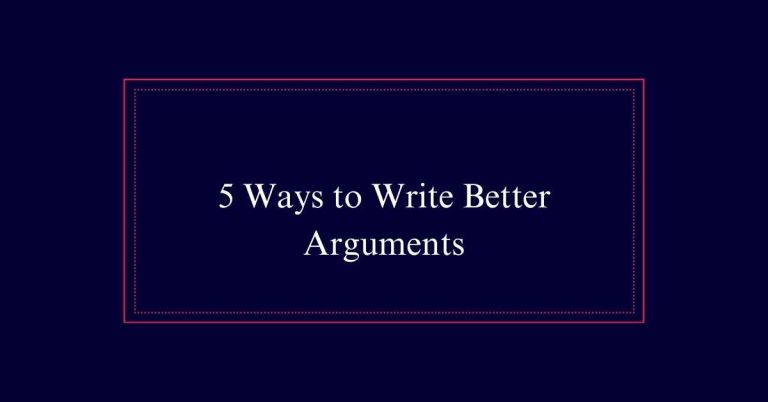What Is Circumlocution?
Circumlocution is the use of more words than necessary to express an idea. It often results in lengthy phrases or redundant expressions, making the text complex and less clear. Writers may use circumlocution to create imagery, soften sensitive subjects, or add mystery.
Prominent examples can be found in novels like ‘Harry Potter’ and ‘The Flamethrowers’. Related terms include verbosity and tautology.
Definition of Circumlocution
Circumlocution refers to the use of more words than necessary to convey an idea. It is the opposite of concision.
In writing, circumlocution can be identified by lengthy phrases or redundant expressions. For example, saying ‘the elongated yellow fruit’ instead of simply ‘banana’ is circumlocutory. This technique can be found in various literary works. Authors often use it to add a layer of complexity or to avoid direct statements. While it can create vivid imagery, it may also confuse readers.
Reasons for Using Circumlocution
Authors employ circumlocution for various reasons, including creating special imagery, avoiding direct statements, and introducing ambiguity.
This technique allows writers to paint a vivid picture in the reader’s mind, enhancing the descriptive quality of their work. It can also be used to soften the impact of sensitive subjects, making them more palatable or less confrontational.
Additionally, circumlocution can introduce a layer of complexity or mystery, engaging the reader by requiring them to read between the lines. By not stating things explicitly, authors can create a sense of intrigue that keeps the reader invested.
Literary Examples
In literature, circumlocution often manifests through characters’ dialogue or narrative descriptions, adding depth and complexity to the text.
For instance, in J.K. Rowling’s ‘Harry Potter’ series, characters often refer to Lord Voldemort as ‘He-Who-Must-Not-Be-Named’ to avoid invoking fear. This indirect reference adds a layer of suspense and mystery.
In Rachel Kushner’s ‘The Flamethrowers,’ detailed descriptions create a vivid atmosphere, immersing readers in the 1970s New York art scene.
Ken Kesey’s ‘Sometimes a Great Notion’ uses circumlocution to develop characters’ thoughts and speech patterns, portraying their complexities.
Similar Terms
Several terms closely related to circumlocution include periphrasis, verbosity, innuendo, equivocation, and tautology.
Periphrasis, like circumlocution, involves using longer phrasing than necessary.
Verbosity refers to excessive wordiness, often leading to unclear communication.
Innuendo implies indirect or subtle suggestions, often to hint at something without stating it outright.
Equivocation involves the use of ambiguous language to conceal the truth or avoid committing to a point of view.
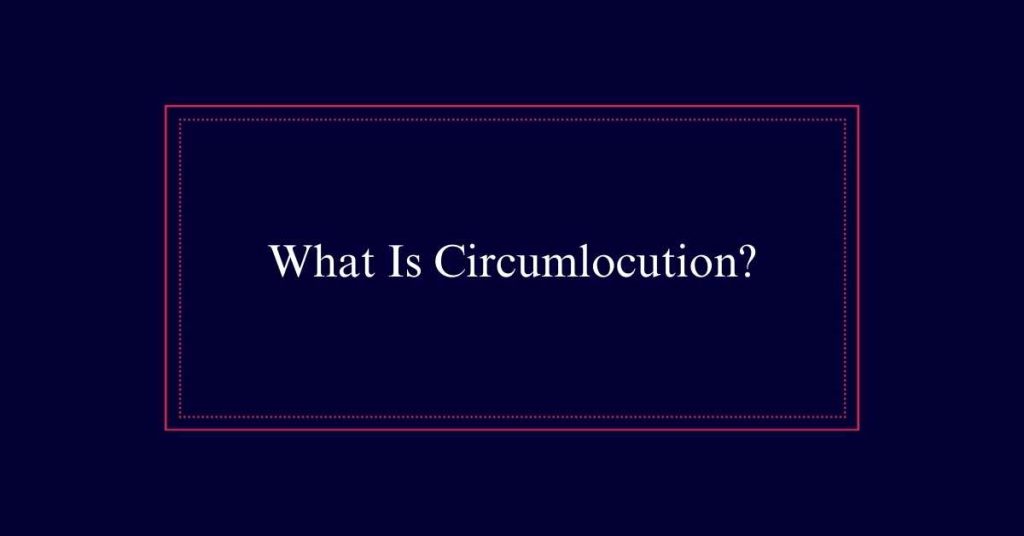
Tautology is the redundant use of words to express the same idea, leading to unnecessary repetition.
Negative Impacts
Circumlocution often frustrates readers by making text unnecessarily complex and difficult to follow. It can lead to confusion and disengagement, making the reading experience tedious. This verbosity hampers clear communication and dilutes the main message. Below is a table illustrating key negative impacts:
| Negative Impact | Description | Example |
|---|---|---|
| Reader Frustration | Causes unnecessary complexity | Lengthy explanations |
| Loss of Engagement | Readers lose interest | Overly detailed descriptions |
| Confusion | Main point becomes unclear | Ambiguous language |
| Inefficiency | Wastes reader’s time | Redundant information |
| Weak Communication | Dilutes the core message | Excessive elaboration |
Identifying Circumlocution
Recognizing circumlocution involves examining word choice and sentence structure to identify unnecessary complexity. Authors often use more words than needed, making sentences longer and more complicated.
Look for phrases that could be simplified without losing meaning. For example, instead of saying ‘at this point in time,’ one could simply say ‘now.’
Additionally, pay attention to redundant expressions and repetitive wording. Reading drafts aloud can help pinpoint awkward or convoluted sections.
Another method is to assess whether each word adds value to the sentence. If a simpler, more direct way to convey the same message exists, then circumlocution is likely present.
Improving Clarity
To improve clarity in writing, one should prioritize concise language and eliminate unnecessary words. This practice makes the text more understandable and engaging. Avoiding circumlocution helps readers grasp the main idea quickly. Writers should edit drafts rigorously, focusing on removing redundant phrases. Analyzing each sentence for brevity guarantees the content remains sharp and clear. Below is a table illustrating common circumlocutions and their concise alternatives:
| Circumlocution | Concise Alternative | Example Sentence |
|---|---|---|
| At this point in time | Now | We need to act now. |
| Due to the fact that | Because | She left because she was tired. |
| In the event that | If | If it rains, we will stay inside. |
| Has the ability to | Can | She can solve complex problems. |
| In order to | To | To improve, practice regularly. |
Comparison With Amplification
Amplification and circumlocution both involve the use of extended language, but they serve distinct purposes in writing. Amplification aims to elaborate on a point, providing additional details to clarify or emphasize an idea. It enriches the text by adding depth and explanation.
Circumlocution, on the other hand, often involves speaking around a subject rather than addressing it directly. It can create ambiguity or avoid confrontation. While amplification enhances clarity and understanding, circumlocution may obscure the message or make it more complex. Writers use amplification to guarantee the reader fully grasps the intended meaning.
In contrast, circumlocution can be employed to soften language or introduce subtlety. Both techniques have their place, depending on the writer’s goal.
Usage in Literature
While amplification and circumlocution serve different purposes, circumlocution’s unique role in literature often involves creating intricate layers of meaning. Authors use this technique to build suspense, evoke emotions, or convey complex ideas indirectly. For instance, J.K. Rowling’s reference to Voldemort as “He-Who-Must-Not-Be-Named” adds an aura of fear and mystery.
| Book Title | Author | Example of Circumlocution |
|---|---|---|
| Harry Potter Series | J.K. Rowling | “He-Who-Must-Not-Be-Named” |
| The Flamethrowers | Rachel Kushner | Detailed descriptions of simple acts |
| Sometimes a Great Notion | Ken Kesey | Extended metaphors and dialogues |
| Moby Dick | Herman Melville | Elaborate descriptions of the whale |
| Ulysses | James Joyce | Complex narrative structure |
Such usage enriches the text, making it more engaging and thought-provoking for readers.
